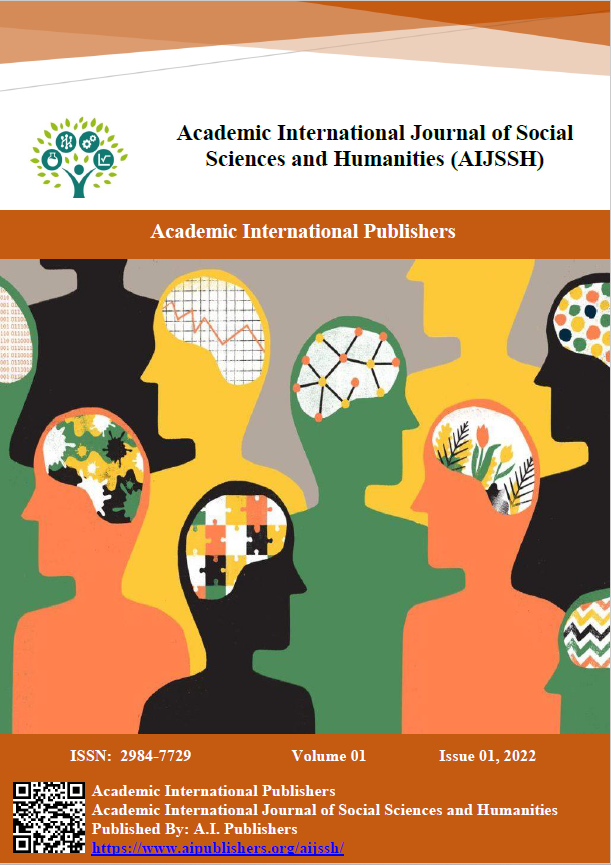Author Guidelines
Format
Language: British English, and Arabic
Word Limit: The entire manuscript should not exceed 7,500 words (excluding references).
Title: Maximum 50 words, capitalize each word, centre alignment, bold, Times New Roman, size 14.
Text font: Times New Roman, size 12.
Abstract Word Limit: Maximum of 750 words.
References Style: APA.
Manuscripts should be typed on one side of the paper in a one-column format with single-line spacing.
Structure
Generally, authors can organize their research article’s structure based on the specifics of their research design and findings. While there are standard guidelines for article structure (such as Title, Address, Abstract, Keywords, Introduction, Methods, Results, Discussion, Conclusion, and References), these can be adapted to fit the needs of different research designs, disciplines, and the specific insights gained from the study. Adherence to general standards helps ensure clarity and consistency in scientific communication, but the arrangement within those sections can vary to best present the research in context.
Title
Maximum 50 words, capitalize each word, center alignment, bold, Times New Roman, size 14.
Authorship
Include the full name(s) of the author(s), the address of the institute(s)/organization(s), and the corresponding author's address with an e-mail and author ORCID link: https://orcid.org/xxxx-xxxx-xxxx-xxxx
Abstract
To enhance the clarity and accessibility of your abstract, we recommend restructuring it into distinct sections that highlight the key elements of your research. A structured abstract typically includes sections for the background or objective, methods, results, and conclusion. This format can help readers quickly understand the core aspects of your study.
Keywords
Keywords in an article are crucial for indexing, searchability, and clarity. They help readers find relevant research and provide a quick reference to the main topics of the study. It should be 3-5 in limit.
Tables and Figures
-
All figures and tables should be placed in appropriate locations within the manuscript and should use Times New Roman, size 10 for English, and Traditional Arabic, size 12 for Arabic.
-
All figures and tables should be of high quality.
-
If the figures are created using a Microsoft Office application (Word, PowerPoint, Excel), please supply them "as is" in the native document format.
-
If the figures are created using a non-Microsoft Office program, they should be converted to JPEG images with a minimum resolution of 300 dpi.
-
The journal editor reserves the right to request authors to revise the figures if necessary.
Acknowledgments
Acknowledgments should only be made for scientific, financial, and technical assistance, and not for routine departmental and typing/secretarial assistance.
Conflict of Interest
Authors are required to disclose all relationships or interests related to their work. All submitted manuscripts must include a 'Conflict of Interest' section at the end of the manuscript, listing all financial and non-financial conflicts of interest. If there are no conflicts of interest, the statement should read:
"The authors declare no conflicts of interest related to this study."
Publication Ethics
The editorial board will monitor for publishing misconduct, including duplicate publication, plagiarism, and falsified or fabricated data, images, and figures. This also includes changes in authorship, unexplained conflicts of interest, and ethical issues with submitted manuscripts. If a manuscript is suspected of research or publication misconduct, the recommendations from the Committee on Publication Ethics (COPE) (https://publicationethics.org/) will be followed.
Language Editing
To ensure that editors and reviewers understand your work, consider using a language-editing service if you are unsure about the quality of your English. Language editing is not required, nor does it ensure that your work will be approved. The journal will continue to perform peer review on edited papers.
References
References should follow the APA style.
Authors are encouraged to use Mendeley software for better reference management.
In-text citations should follow APA guidelines.
Examples:
Journal Article
Author(s). (Year). Title of article. Journal Name, Volume(Issue), page numbers.
Example: Brown, A., & Smith, J. (2022). Social media and political engagement: An empirical study. Journal of Political Communication, 45(3), 220-238.
Book
Author(s). (Year). Title of the book (Edition). Place of publication: Publisher.
Example: Johnson, M. (2021). Understanding Social Change (2nd ed.). London: Routledge.
Chapter in a Book
Author(s) of the chapter. (Year). Title of the chapter. In Editor(s) (Ed(s).), Title of the book (Edition, pp. page numbers). Place of publication: Publisher.
Example: Davis, R. (2020). The impact of globalization on local communities. In Green, P., & White, K. (Eds.), Global Perspectives on Society (3rd ed., pp. 112-130). New York: Palgrave Macmillan.
Website
Author(s). (Year). Title of the webpage. Website Name. Retrieved [Month Day, Year], from URL
Example: Thompson, L. (2023). The rise of digital activism. Social Movements Online. Retrieved March 12, 2024, from https://www.socialmovements.com/digital-activism
Thesis or Dissertation
Author. (Year). Title of thesis [Type of thesis, Institution]. Place of publication.
Example: Carter, S. (2019). Media influence on voter behavior [PhD thesis, University of Oxford]. Oxford.
Newspaper Article
Author(s). (Year, Month Day). Title of the article. Newspaper Name, Section number.
Example: Green, H. (2024, February 10). The effects of urbanization on community life. The Guardian, Society:5.
Plagiarism Policy
All submitted papers will be checked for plagiarism using Turnitin software before being sent to reviewers. The similarity index should be less than 20%.
Academic International Publishers journals frequently utilize Turnitin (https://www.turnitin.com/) to verify plagiarism and guarantee the integrity of published research.
Digital Archiving Policy
All published papers will be submitted and archived in the journal by PKP Preservation Network (PN) (https://pkp.sfu.ca/pkp-pn/), and each article will receive a DOI from Crossref (https://www.crossref.org/).
Copyright Notice
The journal retains full copyright of its published articles and applies the Creative Commons Attribution policy as announced on the journal website.
Peer Review Policy
All submitted papers will be reviewed by an editor first. If the manuscript is within the journal’s scope, it will be sent to at least two independent reviewers for evaluation and feedback. The journal follows an Anonymous Reviewer/Anonymous Author policy in paper review.
Miscellaneous
-
Submission Fee: There are no submission or publication fees for articles submitted to AIJSSH.
-
Language Revision: English/Arabic language revision will be mandatory if deemed necessary by the editorial board to meet publication standards.
-
Optional Services: Authors requesting editing, proofreading, or plagiarism reduction services will be charged accordingly, based on the scope and condition of the manuscript.


